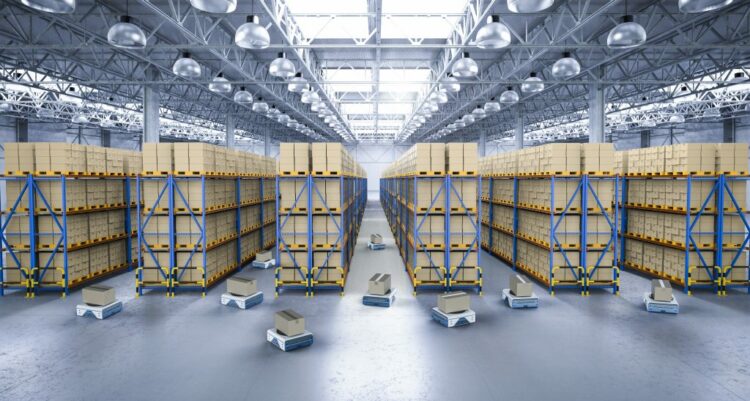
After a 6 percent drop in the automation warehouse market in 2020, the industry is now expecting a growth of 38.4 percent in 2021. One of the keys to this continued growth is the market maturity of mobile robots. Aside from the widely documented productivity boost enabled by the technology, robots also help to reduce workplace health and safety hazards. Importantly, given the intensified labor market volatility this year, robot-based solutions also help to provide employers operational stability.
The benefits are being translated at scale as investment activity mounts. Softbank’s recent $2.8 billion investment in Norwegian warehouse automation specialist AutoStore is one of several funding rounds pointing to the operational gains that robotics provide in intralogistics.

The rise of the Autonomous Mobile Robot (AMR)
Warehouse operators today have to contend with the challenge of record order volumes against the backdrop of a warehouse worker labor shortage. This, as well as the recent need for contact-free solutions amid the pandemic, has led to a necessity for implementing AMRs in the warehouse. The last year and a half has acted as a litmus test for many of these systems, which can, for example, implement automated zone-based picking and pick path optimization. Though zone picking itself can reduce warehouse congestion and cut travel time for workers, the system’s complexity means that warehouse operators can benefit greatly from automated systems that can be easily deployed in busier zones when needed.
Not only can AMRs improve warehouse efficiency, but they are also capable of improving employee safety. Every year, over 11% of all forklifts are involved in a warehouse injury, each of which can cost an operator upwards of $150,000. AMRs can reduce the reliance on manually operated forklifts, providing a safer working environment for employees. The machines’ quick implementation — they can often start operating within four to six weeks — and modularity also makes them easily scalable, a crucial benefit that will help warehouse operators adapt amid the rapid growth of e-commerce.
Market growth for warehouse automation
The number and size of warehouses worldwide are growing rapidly in line with the continued growth in e-commerce. In order to keep up with this growth, warehouse operators are increasingly turning to automation solutions to improve efficiency and reduce time-to-handle. Already on the rise before the pandemic, it is now predicted that the warehouse automation sector will be 6% larger by 2023 than pre-pandemic forecasts predicted.
In 2019, the global warehouse automation market was estimated at $15 billion, an increase of 10.9 percent over the previous year. After a setback caused in large part by the pandemic, 2021 is set to witness a 38.4 percent growth, reaching a market valuation of $19.5 billion. Furthermore, estimates show that the market is expected to grow 150% by 2025 and cross the $37.6 billion mark by 2030. Compound annual growth this decade is estimated to be approximately 10 percent. And there is still space for plenty more. China, for example, accounts for 44 percent of all e-commerce retail sales despite the fact that a third of its population has never made an online purchase.

Record funding in AMRs and warehouse automation
More than 80% of warehouses today have no form of automation, meaning there is ample opportunity for robots to continue to shift the warehouse landscape. This has led to new partnerships aimed at enhancing companies’ fulfillment capabilities. GEODIS, for example, recently announced a $52 million partnership with KNAPP to build a highly automated warehouse system, and Fetch Robotics and Körber unveiled a new case picking solution for distribution centers that will improve safety and efficiency. Investors are latching onto the opportunity with startups such as ATTAbotics and GreyOrange having recently received funding rounds of $83M and $194M respectively.
The warehouse of the future will need to accommodate the expected growth brought on by booming e-commerce while building margin gains into the equation. Much in the same way e-commerce forced a new perspective on brick and mortar retail, it is evolving the warehouse space in a way that goes beyond simply scaling existing structures.